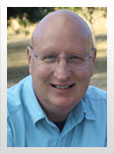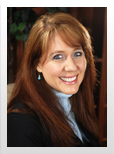|
To receive daily emails from Breaking Christian News to your inbox CLICK HERE
Dr. Corinne: What Women, Especially, Need to Know About Maintaining Healthy Bones: Your Life Could Depend on it SomedayDid you know that more than 99 percent of our body's calcium is held in our bones and teeth? However, bones are mostly made of the protein collagen.
Arms are the most commonly broken, accounting for almost half of all adults' broken bones. The collarbone is the most commonly broken bone among children. Bones stop growing in length during puberty. Bone density and strength will change over the course of life, however. Bones are made up of calcium, phosphorus, sodium, and other minerals, as well as the protein collagen. Bones function as the skeleton of the human body and protect organs from impact damage. They also produce red and white blood cells. You may not know this, but bones are living, active tissues that are constantly being remodeled. They support the body structurally, protect our vital organs, and allow us to move. Additionally, bones provide an environment for bone marrow, where blood cells are created, and they act as a storage area for minerals, particularly calcium. More than 99 percent of our body's calcium is held in our bones and teeth; however, bones are mostly made of the protein collagen. Bones have an internal structure similar to a honeycomb, which makes them rigid yet relatively light. Pretty cool, huh? Understanding the building blocks of bones Bones are composed of two types of tissue: 1. A hard outer layer that is dense, strong, and durable. Called compact (cortical) bone, it makes up around 80 percent of adult bone mass. 2. The second type is called cancellous (or spongy) bone, and consists of a network of trabeculae or rod-like structures. It is lighter, less dense, and more flexible than compact bone. Bones are continually being remodeled, therefore are not static structures. This process involves three main cell types: 1. Osteoblasts These are responsible for making new bone and repairing older bone. Osteoblasts produce a protein mixture called osteoid, which is mineralized and becomes bone. They also manufacture hormones, including prostaglandins. 2. Osteocytes These are inactive osteoblasts that have become trapped in the bone that they have created. They maintain connections to other osteocytes and osteoblasts. They are important for communication within bone tissue. 3. Osteoclasts These are large cells with more than one nucleus. Their job is to break down bone. They release enzymes and acids to dissolve minerals in bone and digest them. This process is called resorption. Osteoclasts help remodel injured bones and create pathways for nerves and blood vessels to travel through. What your bones do for you In addition to supporting the frame of the body, and protecting internal organs, bones provide several metabolic functions. Storing minerals: -Bones act as a reserve for minerals, particularly calcium and phosphorous. -They also store some growth factors, such as insulin-like growth factor. -Bones can raise or reduce calcium in the blood by forming bone or breaking it down in a process called resorption. Fat storage: -Fatty acids can be stored in the bone marrow adipose tissue. pH balance: -Bones can release or absorb alkaline salts, helping the blood to stay at the right pH level. Detoxification: -Bones can absorb heavy metals and other toxic elements from the blood. Endocrine function: -Bones release hormones that act on the kidneys and influence blood sugar regulation and fat deposition. How bones are remodeled The process of bone remodeling is done in two phases. First, with resorption when osteoclasts break down bone. The second phase involves formation when new bone tissue is laid down. Remodeling allows the body to fix damaged sections, reshape the skeleton during growth, and regulate calcium levels. Hormones such as parathyroid hormone, calcitonin, vitamin D, estrogen in women, and testosterone in men control bone remodeling. This may surprise you: approximately 10 percent of an adult's skeleton is replaced each year! Keeping your bones healthy Now that we have bone anatomy and physiology out of the way, let's talk about how to keep bones healthy! Once you reach 30 years of age, you have achieved peak bone mass. Fortunately, many nutrition and lifestyle habits can help you build strong bones and maintain them as you age. Vegetables are a great source of vitamin C, which stimulates the production of bone-forming cells. Some studies even suggest that vitamin C's antioxidant effects may protect bone cells from damage. Bone density describes mineral density, and vegetable intake increases mineral density leading to stronger bones. Strength training is essential! Strength training and weight-bearing exercises are essential for bone health. One of the best types of activity for bone health are weight-bearing or high-impact exercise, which promotes the formation of new bone. Studies in older men and women who performed weight-bearing exercise showed increases in bone mineral density, bone strength, and bone size, as well as reductions in markers of bone turnover and inflammation. Some great weight-bearing exercises include: Tai Chi Hiking Golf What about protein? Protein is essential to bone health. However, getting too little or too much can cause adverse effects. Approximately 50% of bone is made up of protein. Research has shown that low protein intake may affect rates of bone formation and breakdown. High protein diets may come with their own risks. Concerns have been raised that high-protein diets leach calcium from bones in order to counteract increased acidity in the blood. However, with adequate calcium intake, this may not be an issue. Calcium Calcium is the most important mineral for bone health and should be consumed daily. Dark leafy greens such as bok choy, Chinese cabbage, kale, collard greens, and turnip greens all provide excellent sources of calcium. In fact, just one cup of cooked turnip greens provides 20% of your daily requirement! Other high calcium foods include: Seeds Cheese Yogurt Sardines and Canned Salmon Beans and Lentils Vitamin D and Vitamin K to the rescue Vitamin D and vitamin K are essential for building strong bones. Vitamin D helps to absorb calcium, and low vitamin D levels are associated with low bone density. The sun can activate vitamin D formation. However, if you live far from the equator or use sunscreen you can easily be lacking. Look for foods fortified with vitamin D or try a supplement. Consuming fatty fish and liver also provide good sources of this vitamin. Vitamin K helps protein and minerals bind to the bone. Small amounts of vitamin K can be found in liver, eggs, meat and fermented foods like cheese, and sauerkraut. Low-calorie diets can be harmful to bone health. Studies have shown that diets providing fewer than 1,000 calories per day can lead to lower bone density in normal-weight, overweight or obese individuals. If weight loss is your goal, do it with a well-balanced diet and physical activity rather than skimping on nutrient intake. Dangers of weight loss diets on bone health Many people don't realize weight loss involves bone loss. This, however, is less pronounced in obese individuals experiencing weight loss than normal-weight individuals. Being underweight can also be harmful to bone health. In fact, research shows that being underweight increases the risk of osteopenia (thinning bones, but not full-blown osteoporosis) and osteoporosis. Low body weight is the main factor contributing to reduced bone density and bone loss among postmenopausal women. The role magnesium, potassium and fats play in your diet Additionally, yo-yo dieting can be harmful as well, since the repeated loss and regaining of weight is particularly detrimental to bone health. While calcium is king when it comes to bone health minerals, a number of other minerals also play a role. Magnesium plays a crucial role in converting vitamin D into the active form that promotes calcium absorption. These foods include avocados, nuts, legumes, seeds, and whole grains, so boost your intake. Potassium neutralizes the acid in your body that can leach calcium out of your bones. Sweet potatoes are a great source of both magnesium and potassium. Zinc is a trace mineral needed in minimal amounts. It helps make up the mineral portion of your bones. Good sources of zinc include beef, shrimp, spinach, flaxseeds, oysters and pumpkin seeds. Healthy fats, such as omega-3 fatty acids have been shown to help protect against bone loss during the aging process. In a typical diet, the balance of omega-3 to omega-6 fats isn't correctly balanced. Increase your omega-3 intake with chia seeds, flaxseeds, and walnuts. Tobacco, alcohol and menopause The use of tobacco products and alcohol consumption contributes to weak bones. Research suggests women who have more than one alcoholic drink a day, and men who have two or more daily may have an increased risk of osteoporosis. In women, bone density decreases dramatically at menopause due to dropping estrogen levels. The prolonged absence of menstruation before menopause also increases the risk of osteoporosis. In men, low testosterone levels can cause a loss of bone mass. Your doctor can test hormone levels and help determine the best course of action if levels are low. Cool Collagen Some studies report collagen supplementation as a way to help protect bone health. Collagen is the main protein found in bones. It contains the amino acids glycine, proline and lysine, which help build bone, muscle, ligaments and other tissues. A 24-week study found that giving postmenopausal women with osteoporosis a combination of collagen and the hormone calcitonin led to a significant reduction in markers of collagen breakdown. Depending on what you need there are many supplements I recommend on this page. My mission is to help you get healthier without needing more medications. If you would like to join my Inner Circle I will be starting a 100 day No More Meds challenge this summer. Join here to get my FREE ebook, and join the INNER Circle if you want accountability to take action for your health.
By joining this circle, you have the unique opportunity to ask questions and share personal experiences while engaging with like-minded individuals and gaining the support of health professionals who are experts in health and wellness. I am looking forward to showing up more in your life and serving you better! Don't forget to Listen to the No More Meds Podcast and join the No More Meds Movement with me. Subscribe for free to Breaking Christian News here Keep Breathing, Email: Dr@DrCorinneWeaver.com Resources: Dr. Corinne Weaver is a compassionate upper cervical chiropractor, educator, motivational speaker, mother of three, and internationally bestselling author. In 2004, she founded the Upper Cervical Wellness Center in Indian Trail, North Carolina. Over the last 13 years, she has helped thousands of clients restore their brain to-body function. When she was 10 years old, she lost her own health as the result of a bike accident that led to having asthma and allergy issues that she thought she would always have to endure. Then, after her first upper cervical adjustment at age 21, her health began to improve thanks to upper cervical care and natural herbal remedies. This enabled her to create a drug-free wellness lifestyle for herself and her family, and she also enthusiastically discovered her calling to help children heal naturally. Dr. Weaver was named one of Charlotte Magazine's "Top Doctors" in 2016 and is now a number-one internationally bestselling author to two books: Learning How to Breathe and No More Meds. Upper Cervical Wellness Center is known for finding the root cause of health concerns through lifestyle changes, diagnostic testing, nutraceutical supplementation, and correction of subluxation (as opposed to just medicating the symptoms). The practice offers cutting-edge technological care at its state-of-the-art facility, including laser-aligned upper cervical X-rays, bioimpedance analysis (measures body composition), digital thermography (locates thermal abnormalities characterized by skin inflammation), and complete nutritional blood analysis, which is focused on disease prevention.
To receive daily emails from Breaking Christian News to your inbox CLICK HERE
Other Recent Articles from Breaking Christian News Barron Trump Is 'Very Close' to Salvation, Says Pastor Who Had Midnight Call With the First Son 'Country Ever After' Star Loses 7-Year Battle to Colon Cancer: 'Slipped Into the Arms of Jesus' FBI Warns About Ransom Scams Involving Fake 'Proof of Life' Photos The Hill: Somali Scandal Could Sink Minnesota Gov. Tim Walz's Political Career Inflation Lower than Expected, New BEA Report Reveals, Sparking Fed Rate-Cut Hopes Nigeria Secures Release of 100 Schoolchildren Abducted from Catholic School after Weeks in Captivity US Supreme Court Approves Lone Star State's New Congressional Maps Street Preacher's Arrest in Mississippi Sparks Supreme Court Case on Free Speech Rights Trump Offers Plan for Healthcare Cost Crisis, GOP Senator Vows 'We're Going to Fix Obamacare' Nigerian Persecution Horror: Expert Dismantles Disturbing Media Narrative Florida Moves to Redistrict in Congressional Maps Arms Race Maduro's Ex-Insider Turns Whistleblower, Sends President Trump an Explosive Letter Experts Warn Parents AI Christmas Toys Put Kids at Risk: 'Trouble in Toyland' [Video] Pete Hegseth to Bring Christmas Back to the Pentagon: Blaze Exclusive Iryna's Law Needs to Be Replicated Around the Country 'Unbelievable Revival': God Is Moving with Power in Transnistria Despite Russia's Heavy Hand [Video] |
All articles on this site and emails from BCN are copyrighted property of Breaking Christian News. Permission is given to link to, or share a BCN story if proper attribution is given to both the original writer and summarizer of the story. Breaking Christian News 2005-2019. All Rights Reserved.
Breaking Christian News is a division of Elijah List Publications, Inc. All Rights Reserved
Disclaimer: Articles and links, as well as the source articles linked to; do not necessarily reflect the opinion of Breaking Christian News.
| Home | Store | Subscribe | Facebook | Article Archive |



 Over the course of 15 years in practice I have seen multiple people break bones. Ouch! At birth, we have around 270 soft bones and as we grow, some of these fuses together leaving the adult human body with 206 bones, 26 of which are in each foot and 54 in each hand and wrist. (Image credit: Harlie Raethel-Unsplash)
Over the course of 15 years in practice I have seen multiple people break bones. Ouch! At birth, we have around 270 soft bones and as we grow, some of these fuses together leaving the adult human body with 206 bones, 26 of which are in each foot and 54 in each hand and wrist. (Image credit: Harlie Raethel-Unsplash) In my INNER CIRCLE I will be going over all the details of this book for the next 100 days. Join now because I am only allowing 100 people to join, and the doors will be closed soon.
In my INNER CIRCLE I will be going over all the details of this book for the next 100 days. Join now because I am only allowing 100 people to join, and the doors will be closed soon.








